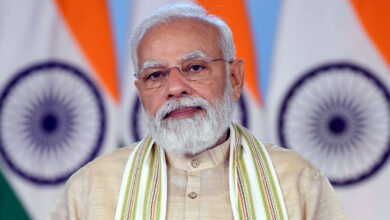Child labour in INDIA: Millions of children are unable to attend school even in the 21st century

Child labour in INDIA: Millions of children are unable to attend school even in the 21st century
For a healthy nation to grow, the child must be helped to find their nature, their nature and capacities, grow into their full physical and mental forces, and develop the full breadth, depth, and height of their emotional, intellectual, and not being a labour.
Nearly a third of the world’s population consists of children. To keep up and improve posterity, they need to be taken care of and protected. The culture’s future is shaped by children, who are an integral part of social structure. How do we define a child? What do we mean by children? It is becoming increasingly challenging to develop a single definition of “child”. It is a young person, usually between infancy and youth, who is referred to as a “child”.
A child is a human being between birth and puberty or between the stages of infancy and adulthood. Children are considered minors in the legal sense or not yet adults. Alternatively, it is called ‘adults’. There is no distinction based on age. Only that the child is incapable of maintaining himself is the only qualification. As long as a child cannot care for himself, he is still a child.
For the first time since the previous decades, India seems to have done more than enough to protect children from any negative circumstances. A democratic state such as India has instituted scores of programs and policies in child welfare in line with international development. The Ministry has made a major step in this direction of Women and Child, especially focusing on street children, abandoned children, children in conflict with the law, and children abused.
“Child” signifies a person who hasn’t reached the age of majority under the applicable law, regardless of the individual’s gender. “Child” refers to someone younger than twenty-one or older than eighteen years of age, whichever is more youthful.
“Humanity’s fate rests with the next generation, who is going to carry on what you started.”
Are there any rights for children? Yes. Every human being has some rights, including children. No one should rob them of these rights. The rights of children are widely recognized around the world.
Moreover, the UN adopted the Child Rights Declaration in 1989. The UN acknowledges children’s rights and responsibilities as human beings. Any human younger than eighteen years old is a child unless the child has reached the majority earlier under the applicable law.
They recognize that a child should grow up in a happy, loving, and caring family environment to develop their personality to the fullest. Because a child must be fully prepared for their individual life within society, respect, tolerance, freedom, equality, and solidarity are all values that must be protected.
A child’s right is their perceived human rights with particular focus on the rights of special protection and cares they are afforded, such as their right to associate with both biological parents, their right to develop their Child rights include identity, food, education, health care and a criminal law appropriate to the child’s age and development. Children under 14 receive free education under the compulsory education law.
The term child labour refers to the regular and sustained employment of children. Many international organizations consider this practice exploitative, and it is illegal in many countries. It is a crime to employ children under the age of 14. Employers who hire children are subject to labour laws that prohibit anyone under the age of 18 until they obtain adult status.
As part of this research, the researcher will examine child labour’s socio-ethical and legal dimensions in Indian society and children’s rights.
COVID-19 is an essential cause for child labour concern

In 2020, the pandemic resulted in an estimated 142 million additional children living in income-poor households, a significant increase of 24 per cent from the previous year. In addition to losing their jobs and incomes, their families have seen remittances cut and experienced other shocks.
A coping mechanism used by families during a crisis is child labour. In addition, schools are shut down during lockdowns, which increases risks, especially for children in vulnerable situations, since they prefer to work when they cannot go to school. Over 90 per cent of the world’s students have been affected by pandemic-related school closures, and more than half of the world’s students didn’t participate in remote learning. In most cases, it can be challenging for children to return to school when they leave school and enter paid employment. Unless the education crisis is dealt with vigorously, it may quickly become a child labour crisis.
Child Labour
- Meaning
Children shouldn’t have to work universally accepted, but there is no universal solution to why child labour persists and how it can be addressed. Child labour is prevalent in all spheres of life in India, and its elimination is crucial. The carpet, glass, and other hazardous industries employ tens of thousands of children nationwide.
Child labour generally has two meanings. First, there is an argument that it is an economic necessity of low-income families; second, there is the explosive aspect in children’s work linked to the profit maximization urge of commercial enterprises, causing children to work long hours and be paid low wages deprived of education.
According to the ILO12, child labour “consists in children living permanent adult lives, working long hours for low wages under conditions damaging to their health, physical development and mental well-being, sometimes separated from their families, and often deprived of meaningful education and training opportunities that might lead to a better future”.
- Reason
Child labour is caused by various factors, which vary from place to place. Poverty is a significant contributor to poverty in India, but it is not the only one. People who want cheap labour must pay children less than adults. Child labour is more commoditized than adult labour. Profit maximization is the driving force behind child labour.
Among the main reasons child labour is not controlled are poverty, low wages, unemployment, the absence of family allowance schemes, migration to urban areas, large family sizes, cheaply available children, lack of strict education provisions, illiteracy, ignorance of parents, and traditional attitudes.
- In India

In terms of child labour, India ranks second in the world. The most exploited and employed children are found in Africa. There is no doubt that children in this country are in a pathetic state.
There is a human rights issue in India involving child labour. Under the age of fourteen, many children work in carpet manufacturing factories, glass blowing units, and making fireworks with bare hands, and it is a severe and extensive issue. India’s government provides statistics stating that 20 million children are working. However, other agencies claim 50 million children are working.
Child labour is a dire situation in India. It is not uncommon for children to work for eight hours straight without a break. The children are malnourished, and the meals are frugal. Children working in migrant camps are often forced to sleep at their workplaces, which is harmful to their health and development. About 75 per cent of the Indian population still lives in rural areas and is extremely poor. Poverty-stricken rural families who have children perceive them as income-generating resources. When children are raised in such families, their education is sacrificed to provide for the growing needs of their younger siblings, who are seen as wage earners for the entire clan.
Children are abused for labour in Northern India, and it is accepted as a necessary measure for alleviating poverty by the local population. Children work in carpet weaving industries for low wages and unhygienic conditions for long periods. Usually, the children working in these units are migrant workers who were sent here by their families to earn money so they could send it back home. They work in carpet factories because the families they support depend on their income.
While experts blame the crime on poverty, illiteracy, and adult unemployment, the truth is that every crime against a child is the fault of the entire nation. With each passing year, the problem of child labour in India was allowed to grow rather than be nipped in the bud. Numerous industries are increasingly using youths under the age of 14 at the expense of their innocence, childhood, health, and lives.
Child Labour And The Indian Constitution
Forced labour and human trafficking are prohibited under the Indian Constitution article 2314. Children cannot be employed in factories under Article 2415. Under no circumstances should a child under the age of fourteen work in a mine, a factory, or any other hazardous occupation.
It was generally understood that securing Article 24 rights will be of limited use if they are not supported by legislation that prohibits or penalizes their violation. In Laborers, Salal Hydro Project v. the State of J&K17, it was again determined that the employment of children in construction work is contrary to Article 24. However, the Supreme Court did state that Article 24 “must operate Proprio vigora” even if the prohibition in it is not “followed up by appropriate legislation.
Despite the widespread prevalence of child labour, it was noted in the case of M C Mehta v. the State of Tamilnadu. Consequently, it issued wide-ranging directions in the context of the employment and exploitation of children in Sivakasi, prohibiting employment of children younger and arranging for their education through the creation of a fund and providing employment to their parents or other adults in the household. Regarding the employment of children in carpet weaving in Uttar Pradesh, these directives were echoed in Bandhu Mukti Morcha v. Union of India19.
The state must, in particular, ensure workers’ health and strength, and children’s tender age, are protected. Furthermore, the state must ensure citizens will not be forced to engage in unsuitable careers due to economic necessity. In addition to that, the state should direct its policy towards securing the given chances and facilities for the children to develop healthily and live in freedom and dignity and make sure that young people are not exploited and are not abandoned by their parents.
The Indian Constitution provides early childhood education and care to children up to six years in Article 4522. Until the age of six years, the state is obliged to make an effort to ensure that all children receive early childhood care and education.
Child Labour (Prohibition & Regulation) Act, 1986
India’s Parliament passed the Child Labour (Prohibition and Regulation) Act, 1986, in response to the growing problem of child labour in the country. By passing this Act, child labour was declared illegal and punishable by any Indian citizen. In this Act, the purpose is to bring to this nation’s attention that there are laws protecting children from child labour. Although the situation hasn’t improved, there’s been no improvement on the ground.
What are the solutions?

Children are not being kept in school and are not participating in child labour as effectively as they should, among many other well-known solutions:
- Abolition of compulsory schooling at the end of the mandatory working age
- To increase students’ chances of staying in school and succeeding by improving the total quality of education.
- Reducing or eliminating school costs, which can be unaffordable for some students, as well as adding school feeding programs
- It is often necessary to prove a child’s age and legal identity with a birth certificate before accessing education.
- In some countries, universal child benefits are provided as part of their social protection systems (see below), and other policy instruments might encourage more equitable educational access.
- Pandemic-related back-to-school campaigns and outreach to alert parents to the importance of investing in education following school closures due to pandemics
- Flexible school calendar and curricula to incentivize school attendance and accommodate the seasonal demands of family farms
- Provide vocational education and training (VET) to children aged 15-17 years to facilitate their transition from school to work to have the knowledge, skills and competencies to access decent jobs after they reach working age.
- The mismatch between skills and demand on the labour market can be reduced by involving the formal and informal private sector
- Enhancing teachers’ working conditions and wages by empowering their unions
- Infrastructure improvements for schools, including safe roads, water, and sanitation
The right kind of social protection can make a big difference.

Cash transfers or universal child benefits are effective ways to protect children. The provision of regular transfers to all families with children has been proven as a simple and effective means to cushion children and families from poverty and improve access to education and other services. School attendance can be encouraged, and the payments can offset school fees. Families of informal workers may require solutions as they may not receive social protection payments.
Summary
A nation’s children are one of its most important assets. To raise healthy, fully developed citizens, in terms of physical, mental, and moral health, with society’s skills and motivations. The development of children’s programs should play a prominent role in our national plans to develop human capital sources.
The problem of child labour in India is significant. Indian child labour participation rates are higher than those of other developing countries, showing the prevalence of child labour. In the period of growth, we should aim to provide all children with equal development opportunities. The government and other institutions set up for this purpose should join hands with us citizens to accomplish this.
Child education can help solve the issue of child labour. As a part of the government’s effort to provide free primary education and reduce the burden on parents, who struggle to prepare a day’s worth of food for their families, we have allocated funds. Poor families, however, don’t take advantage of these facilities due to a lack of awareness. So, To create awareness, appropriate measures must be taken.
A focus on one factor, such as education or the enforcement of child labour laws, will not eradicate child labour. Before attacking child labour, India’s government must ensure that the needs of the poor are met. Addressing poverty will automatically reduce the need for child labour. As long as India does not eliminate the need for child labour, child labour will exist.
Child labour hinders India’s development as a nation. As a result of working and not attending school, children are growing up illiterate. Each generation creates a cycle of poverty, and the need for child labour is reborn. Child labour in India needs to be addressed by addressing the underlying causes and enforcing government policies. Then India will succeed in its fight against child labour.






